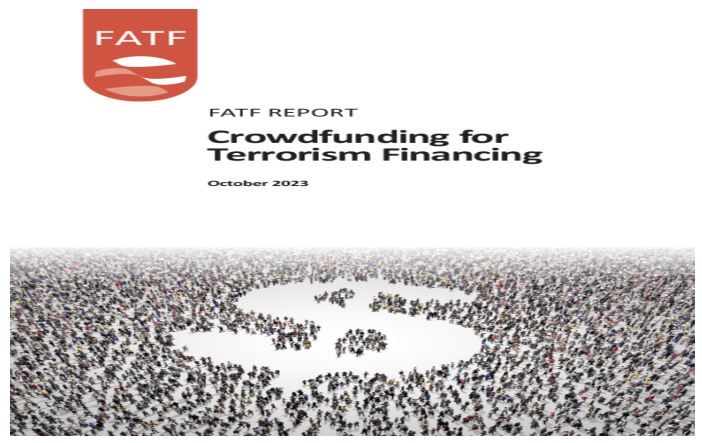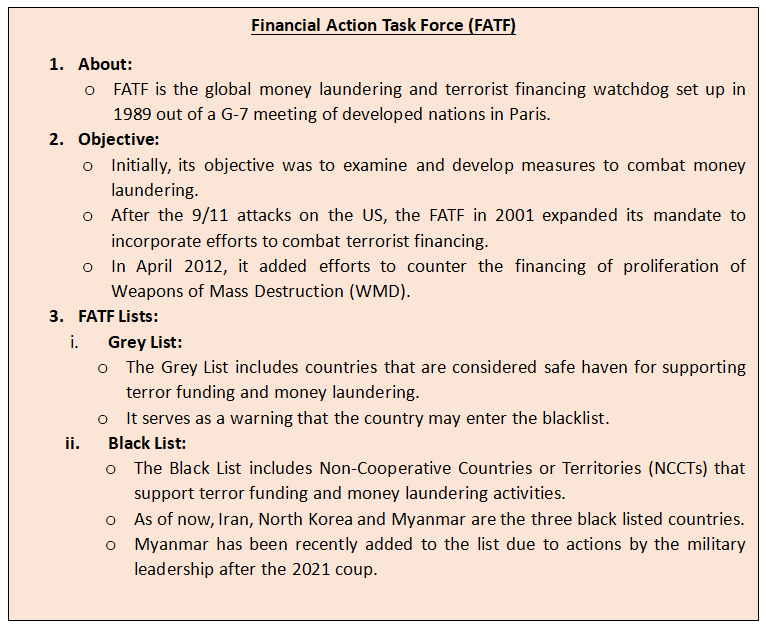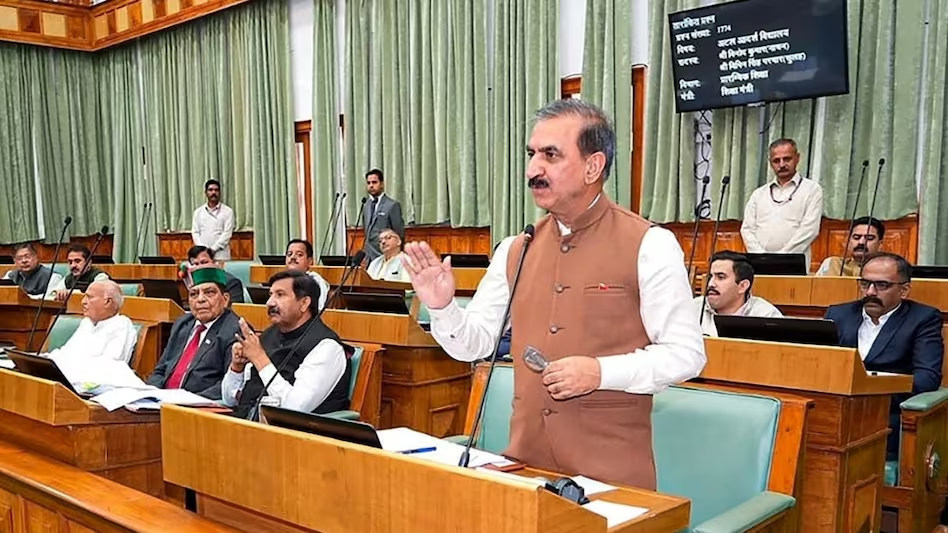- Courses
- GS Full Course 1 Year
- GS Full Course 2 Year
- GS Full Course 3 Year
- GS Full Course Till Selection
- Answer Alpha: Mains 2025 Mentorship
- MEP (Mains Enrichment Programme) Data, Facts
- Essay Target – 150+ Marks
- Online Program
- GS Recorded Course
- Polity
- Geography
- Economy
- Ancient, Medieval and Art & Culture AMAC
- Modern India, Post Independence & World History
- Environment
- Governance
- Science & Technology
- International Relations and Internal Security
- Disaster Management
- Ethics
- NCERT Current Affairs
- Indian Society and Social Issue
- NCERT- Science and Technology
- NCERT - Geography
- NCERT - Ancient History
- NCERT- World History
- NCERT Modern History
- CSAT
- 5 LAYERED ARJUNA Mentorship
- Public Administration Optional
- ABOUT US
- OUR TOPPERS
- TEST SERIES
- FREE STUDY MATERIAL
- VIDEOS
- CONTACT US
Crowdfunding for Terrorism Financing
Crowdfunding for Terrorism Financing
17-11-2023

Context
Recently, the Financial Action Task Force (FATF) released a report titled "Crowdfunding for Terrorism Financing," revealing that violent extremist organizations utilize structured networks for fundraising.
- The report details the Popular Front of India (PFI)'s use of public funds solicitation for arms, ammunition, and cadre training in mosques and public places.
What is Crowdfunding?
-
About:
- Crowdfunding is a dynamic fundraising method that leverages online platforms to gather small contributions from a large pool of individuals for various purposes such as supporting charitable causes, funding startup ventures, or financing creative projects.
- Although crowdfunding is mostly utilized for legitimate purposes, recent events have shown that it can also be used for illicit objectives, particularly by terrorists and terrorist organizations.
- These organizations raise money for their extremist causes all across the world through social media and fundraising platforms.
-
Methods of Misuse for Terror Financing:
- Abuse of humanitarian, charitable and non-profit causes which can operate as a front to raise cash for terrorism.
- Because of the amount and variety of activity on dedicated crowdfunding platforms and websites, it might be challenging to identify unlawful conduct.
- Extremists can spread their messages widely and direct users to certain fundraising campaigns through social media platforms and messaging apps.
- interaction between virtual assets and crowdfunding, including the use of privacy coins and services that improve anonymity, including mixers and tumblers.
Key Highlights of the Report
-
Mixed Fundraising Strategies:
- The PFI raised money by holding fundraisers in public areas and religious locations like mosques.
- In order to promote donations, the organization also employed contemporary digital techniques, such as sharing bank account information and QR codes.
- The organization collected funds through both domestic and international activities, which presented a challenge for the investigation because of the multifaceted character of the financial flows.
- Diverse Use of Funds: Funds raised through crowdfunding were not limited to a single purpose. The organization invested a portion of its collected funds in businesses and real estate projects to generate regular income for terrorist activities.
- Global Context: The report discusses the global context of crowdfunding for terrorism financing. The report reveals that despite most crowdfunding activities being legitimate, terrorist organizations like ISIL and Al-Qaeda have used them to fund their activities.
- Recommendations:
- Global Anti-Money Laundering and Counter-Terrorism Financing (AML/CFT) policies must be uniform, according to the FATF report.
- It draws attention to the fact that many nations do not routinely evaluate the risks connected to crowdfunding operations, which leaves a dearth of thorough information regarding its abuse.
- The cross-border aspect of crowdfunding campaigns and the related financial transfers is highlighted by FATF.
- Countries are asked to acknowledge that their territory can be used as a pass-through for financial flows even in the absence of major domestic terrorism activities.
What is PFI?
- The Popular Front of India formed in 2007 through the merger of three Muslim organizations in southern India in Tamil Nadu, emerged in the aftermath of the ban on the Students Islamic Movement of India (SIMI) and has been involved in various social and Islamic religious activities among Muslims.
- The PFI, a group advocating for the rights of minorities, Dalits, and marginalized communities, has been accused of involvement in extremist activities.
- The Ministry of Home Affairs in 2022 deemed the PFI and its associates or affiliates as an "unlawful association".
How to Deal with Such Organisations while Preserving Civil Liberties and Ensuring National Security?
-
Clear Legal Framework:
- The goal is to create a comprehensive legal framework that outlines the criteria for identifying an organization as a potential threat to national security.
- The framework should be based on constitutional principles, international Human Rights standards, and due process.
- Judicial Oversight: The judiciary is responsible for ensuring that government actions are in line with the law and safeguarding the rights of individuals.
-
Transparency and Accountability:
- The goal is to maintain transparency in the process of identifying organizations as unlawful and to provide reasons for such actions.
- The legal framework should be established with mechanisms for accountability and oversight to prevent misuse.
- Targeted Actions: The strategy focuses on targeting individuals or entities directly involved in criminal or terrorist activities, rather than a broad organization, to minimize the impact on innocent members and supporters.
- Intelligence and Surveillance: Enhance intelligence gathering and surveillance capabilities to monitor potential threats, ensuring they are in compliance with the law and subject to oversight.
- Public Awareness: The campaign aims to raise public awareness about the dangers of extremist ideologies and the significance of reporting suspicious activities, promoting proactive measures to safeguard national security.

Must Check: Best IAS Coaching In Delhi



